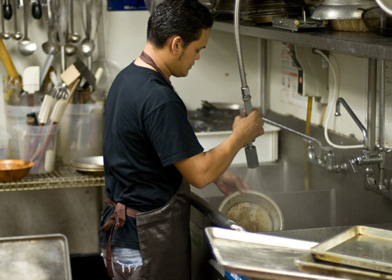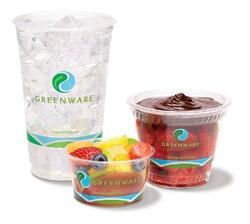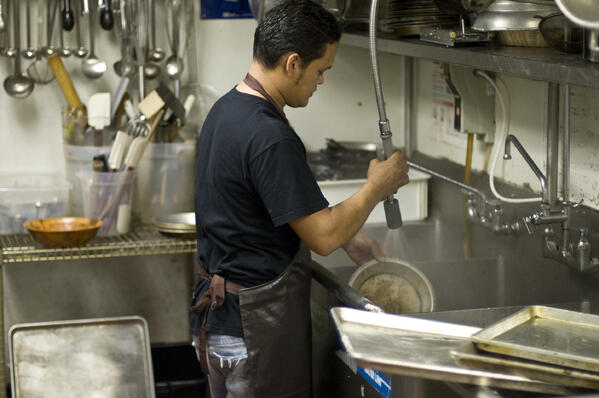
Easy Ways for Your Restaurant to Go Green
According to a recent survey, 55% of consumers are willing to pay more for products they know are environmentally-friendly. Not only will consumer perceptions of your restaurant change if you go green, but you’ll also be able to take advantage of tax breaks, improved energy efficiency and limited food waste.
Here are easy ways you can make a difference in your establishment’s green footprint and develop sustainable practices that will save you money.
Choose energy-efficient light bulbs
According to EnergyStar, if every household in the United States replaced just one normal light bulb with an energy-efficient bulb, the country would save $600 million in energy costs. Think about how much energy (and money) you’d save if you replaced all the bulbs in your establishment. It’s a win for the environment and a win for your electric bill.

Use green disposables
If you’re still using styrofoam, it’s time to swap out this non-biodegradable material for something more eco-friendly. Everything from cups and glasses to forks, plates, straws and to-go containers can now be created from green materials that are compostable, biodegradable or, at the very least, recycled. Don't know where to start? Take a look at renewable plant-based packaging.
Check your kitchen equipments’ efficiency
Your kitchen equipment might not be as energy-efficient as you think it is. In fact, the foodservice industry uses $10 billion in energy each year - and nearly 80% of that energy is wasted in completing unnecessary processes.
Buying all-new equipment is a major undertaking, but there are measures you can take to make the most of the equipment you already have. The U.S. Department of Energy suggests checking for these energy sucks on your commercial kitchen equipment:
- Switch off your appliances and your lights when they’re not in use. Be sure to check for "energy vampires": plugged-in appliances that still use energy when not turned on.
- Make sure your refrigerators and freezers aren’t too cold. A temperature of 35° to 38° F is fine for fresh food, while 0° F is cold enough for long-term storage.
- Clean your range-top burners and reflectors regularly so they better reflect heat. Cleaning your stove’s grease trap is also a good idea.
- Keep your heating and cooling in shape by changing your filters often and having your HVAC vents cleaned every year. Remember, the cleaner the appliance, the more efficiently it runs.

Implement sustainable water practices
According to the Environmental Protection Agency, kitchens consume 52% of a restaurant’s total water usage. By implementing sustainable water practices, you can decrease water usage while saving on operating and energy costs.
The first and most cost-effective thing to do is teach your staff how to properly prep dishes and use your dishwashing machine. Next, consider upgrading your most inefficient kitchen equipment to EnergyStar-certified models to help save water, energy and money.
Limit your food waste
According to the USDA, 30-40% of our food supply ends up going to waste. To make sure you're using fresh food before it goes bad, label food with expiration dates on easy-to-read stickers. If you prefer to go high tech to manage your perishables, try implementing a digital inventory management tool. New technologies send alerts to your phone to make sure you’re using your nearly-spoiled food. When organic material like food needs to get tossed, try implementing a composting program to minimize your eco-footprint.
Making your restaurant or brewpub more sustainable doesn’t have to require a full-scale overhaul. Instead, simple, step-by-step changes can considerably diminish your environmental footprint. And with the money you'll save, you can go green to get green.